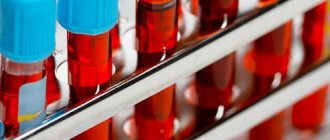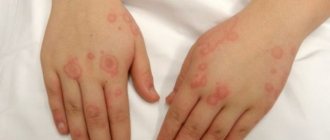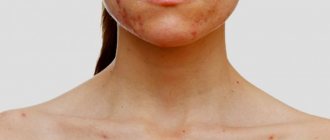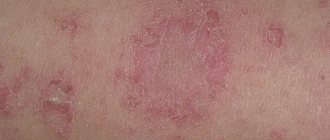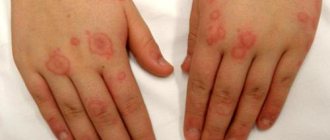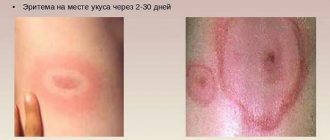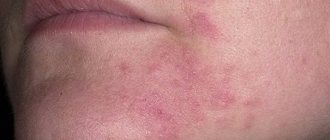Any person suffering from unpleasant sensations on the body such as burning, tingling or severe itching wants to get rid of them as quickly as possible. They are especially painful if the whole body is covered in blisters and itches. In such a situation, it is not possible to lead a full life due to constant discomfort. Eliminating these negative signs is not so easy. First of all, you need to find out why such a nuisance arose. Often these pathological formations on the skin do not pose any threat, but the possibility that their occurrence is the first sign of a dangerous disease cannot be completely ruled out.
List of causes of dermatological pathologies accompanied by itching
As a rule, patients put off visiting a dermatologist until the last moment. Make an appointment when the pain and burning sensation are unbearable, and the formations on the skin itch like bites. Blisters do not appear on the body just like that - most often they are a consequence of the following pathologies and diseases:
- allergic manifestations;
- prickly heat (more common in children);
- household burns of varying degrees;
- infectious diseases;
- fungal infections of the skin;
- atopic dermatitis;
- consequences of impaired immunity due to bad habits and chronic stress.
In each individual case, treatment will be different. But there are also ointments that in any case will have a calming effect - however, such products almost always include corticosteroids, which have a lot of side effects. If the cause of the pathology is not eliminated, large blisters on the body will not go away or become smaller. They itch like bites, bring discomfort and interfere with normal life and work - such manifestations cannot be ignored, you should visit a dermatologist.

Blisters on the skin due to allergies: is this phenomenon dangerous?
One of the most common modern medical problems is allergies, and blisters on the skin are one of the symptoms of such a reaction. They often appear suddenly and cause a lot of inconvenience, but they can also disappear quickly. How to get rid of them, or even better, prevent such a problem?
If a person is susceptible to allergies, he is very familiar with symptoms such as lacrimation and runny nose when in contact with an irritant.
However, the scope of signs is much wider:
- swelling;
- redness of the eyes;
- hyperemia of the skin;
- the appearance of a rash on the body;
- itching;
- temperature;
- nausea;
- sore throat;
- difficulty breathing.
It is the rashes that are a clear sign of a problem. It is worth considering that they can also be associated with other diseases, for example, parasites, diabetes, hormonal imbalances, infections, etc.
Blisters are swelling on the skin in the form of a dense lump or bubble of liquid.
There are several types of such formations:
- small rash;
- large bumps;
- spots;
- bubbles.
The most common allergy in the form of a rash is urticaria. The pimples begin to itch and turn red. When pressed, the center remains white.
Typically, blisters appear on sensitive areas of the body where many capillaries are located.
These include:
- wrists;
- elbow and knee bends;
- face;
- stomach.
The rash may spread to the legs and arms, back and chest. Severe itching is not the only problem. In case of an acute reaction, severe intoxication may develop, as well as Quincke's edema.
A similar reaction in the form of blisters occurs when an allergen enters the body. In this case, both internal penetration (food) and a contact form of the disease (reaction to cosmetics, clothing material, etc.) are possible.
Blisters on the body are the result of the release of histamine into the blood. In those areas where many capillaries are located, vascular permeability increases, and allergy mediators react. All this provokes tissue swelling and corresponding symptoms.
Most often, allergies occur as a result of exposure to:
- food products (honey, eggs, nuts, citrus fruits, etc.);
- artificial additives and preservatives;
- cosmetics;
- household chemicals;
- medicines;
- frost and wind;
- ultraviolet;
- chromium and nickel;
- insect or animal bite;
- animal hair;
- costume jewelry;
- plants;
- clothing material, etc.
To successfully treat and prevent similar problems in the future, it is necessary to determine the exact cause of the allergic reaction. You can do this yourself by observing your own body’s reaction to certain stimuli. An alternative option is allergy testing in a medical facility.
An allergy is a rather dangerous reaction of the body. If it is not stopped in time, a person risks his health and sometimes his life.
As first aid, you must do the following:
- Eliminate the source of irritation. If you don't do this, the problem will not go away. In addition to exacerbation of symptoms, you risk acquiring chronic urticaria;
- You need to take an antiallergic drug. It will block the production of histamine and relieve swelling. In difficult situations, the drug is administered intravenously;
- Relieve skin irritation. It is necessary to calm the inflammation so that the blisters on the body do not begin to fester.
If you have all the necessary resources at home, you can do it yourself. In case of an acute reaction, immediately call an ambulance.
To achieve a quick effect and relieve symptoms of allergies, medications are used.
If the problem is associated with the appearance of blisters on the skin, you should use the following medications:
- Antihistamines. Since allergies are associated with the production of histamine, this process needs to be blocked;
- Sedatives. Allows you to relieve itching and relieve general tension and irritability;
- Glucocorticosteroids. Eliminate discomfort, relieve inflammation;
- Enterosorbents. They act on the cause of the allergic reaction from the inside, that is, they absorb irritating elements and remove them from the body, preventing intoxication. Used when consuming food products;
- Calcium preparations and vitamins (A, C, E). They help reduce vascular permeability and prevent the formation of blisters on the skin;
- Antiseptics. To disinfect the rash area. Additionally, local anti-inflammatory drugs may be needed.
If a person is prone to allergies, especially in its chronic form, all these medications must be not only in the home medicine cabinet, but also constantly in a purse or pocket when leaving the house.
Additionally, physiotherapy may be prescribed at the hospital. This is mainly electrophoresis using drugs. When exudate accumulates, the bubbles are forcibly opened and the affected area is treated with an antiseptic with anti-inflammatory drugs.
Folk remedies can also be used to relieve allergies and eliminate their consequences. Their advantage is that the body is not once again exposed to medications and synthetic substances. At the same time, certain ingredients can provoke an even greater negative reaction in the patient, since herbs are also potential allergens.
In order to get rid of blisters on the body and reduce itching, use decoctions for baths and compresses, and homemade ointments. In addition, they are also used to disinfect the surface of the skin and relieve inflammation.
The best means are:
- decoction of string;
- chamomile decoction;
- coltsfoot ointment with fresh milk;
- lard;
- decoction of oak bark;
- infusion of yarrow;
- vinegar diluted with water;
- a raw egg.
Alcohol tinctures, for example, with cucumber juice, thyme, sage or string, are considered good antiseptics. They need to be used to wipe areas with rashes, especially if they are pimples with liquid and pus inside.
Many people make the same mistakes, which lead to complications and worsening symptoms.
If blisters appear on the body, it is strictly forbidden to:
- Scratch, no matter how severe the itching. Otherwise, the rash forms a continuous spot, and the itching intensifies. An infection can penetrate through microdamages and suppuration can develop. You also cannot open the blisters yourself, especially without antiseptic treatment;
- Drinking alcohol. Sometimes allergies are directly related to drinking alcohol. In addition, in its treatment, drugs are used that are not allowed to be mixed with alcohol;
- Place a plaster over the rash. You can make lotions with medications, but you can’t cover up pimples for a long time. Bacteria can accumulate under the patch and diaper rash may form. In addition, sometimes the glue used to make the patch also provokes allergies;
- And, of course, the problem cannot be ignored. Sometimes procrastination can cost you not only your external beauty and health, but also your life.
To prevent allergic blisters from appearing, it is necessary to follow the prevention recommendations. This is especially true for those people who have experienced chronic urticaria and young children:
- Limit contact with all potential allergens, and even better, get tested for allergy tests in advance.
- Reduce your intake of foods that may cause allergies. Pay attention to their composition, exclude questionable additives.
- Use less cosmetics and household chemicals of questionable quality, check your body’s reaction in advance (sensitivity test).
- When washing dishes, laundry, or cleaning, protect your hands with gloves.
- Protect your skin from frost, wind and sun.
- For sensitive skin, use special care products and cosmetics; instead of regular soap, buy hypoallergenic cream-gel and milk.
- Wear jewelry and clothing made from materials that do not irritate your skin.
- During the flowering season of certain plants (linden, ragweed, etc.), take a preventative course of antihistamines if necessary.
If an allergy strikes you, always have the necessary medications on hand and do not ignore the symptoms.
The materials posted on this page are informational in nature and intended for educational purposes. Site visitors should not use them as medical advice. Determining the diagnosis and choosing a treatment method remains the exclusive prerogative of your attending physician.
Source: https://allergology.ru/kozhnye/allergiya-voldyri-na-kozhe
Causes of allergic nature
First of all, you should remember whether the patient suffered from allergies in childhood. However, a history of such a reaction does not guarantee that it will not appear in adulthood. Symptoms of urticaria (this is how allergies to medications and certain foods manifest themselves):
- the appearance of small blisters on the body;
- itches like mosquito bites;
- over time, when scratching, pus or ichor appears;
- can go away as suddenly as they appeared.
In itself, recovery from hives without the use of any kind of medication is a fairly common phenomenon. One has only to remove from the diet the factor that provokes such an allergic reaction, and the symptoms disappear. “Blisters on the back that itch like bites” is a complaint allergists often hear. If the pathology does not go away on its own, then you should undergo a special antigen test, with the help of which you can conclude which substance provokes the appearance of urticaria. After this, as a rule, the allergist prescribes antiallergic drugs - usually Zyrtec, Fenistil, Suprastin and others. It is not recommended to choose a drug on your own, as it may not be active enough for a particular patient.

To scratch or not to scratch?
Dermatitis, urticaria, and prickly heat cause severe itching, which forces a person to pay attention to the appearance of tumors. Red spots of dermatitis swell when scratched, turning into blisters of various sizes.
READ ALSO: Urticaria pigmentosa: 9 photos with descriptions, treatment, causes, symptoms
Any attempt to scratch them injures the skin, the scratches become inflamed, suppuration begins, and after recovery or relief of the attack, a scar or scar remains at the site of such a blister .
Whatever the cause of the red blisters, whether they itch severely or not, you should not rub them, because it is no coincidence that small children wear special gloves or mittens with a soft coating on their hands, which are very difficult to injure even very delicate skin.
Miliaria in children and adults: causes and treatment methods
This dermatological problem is usually typical for children under six years of age. Small pimples appear that cause itching. The condition worsens during the hot season. Small blisters, like mosquito bites, itch and cause mild pain - this may be a consequence of constant prickly heat. In this case, the pimples are located close to each other and usually on those parts of the body that are more susceptible to sweat.
The main factors that provoke the appearance of prickly heat are:
- increased sweating;
- excess weight or an abundance of baby folds;
- rise in general body temperature;
- infectious diseases suffered recently;
- intense physical activity and sports;
- wearing clothes that are too warm.
You can get rid of the problem by normalizing your body temperature, avoiding overheating and following all the rules of personal hygiene.
The simplest and most effective way is to sprinkle the problem areas of the body with powder after taking a shower or bath using tar soap, and during the day lubricate them with Bepanten or Solcoseryl cream or ointment.
What blisters may indicate
Watery blisters that appear on the feet can have different origins, differ in size, symptoms, location, be a manifestation of a disease or be a consequence of an external factor.
Vesicles with transparent or translucent exudate inside have signs of inflammation, can itch, burn, be accompanied by pain on palpation, be dense or easily wounded, be supplemented with elements of a rash, and manifest as multiple or single rashes. Depends on the reason why they appeared. There are two ways for blisters to appear on the feet:
- An allergic reaction on the feet can develop due to the influence of various irritants. This could be food, medicine, cosmetics, socks or shoes. Watery allergy rashes are accompanied by redness and itching;
- Hyperhidrosis manifests itself in increased sweating of the feet. Due to the constant moisture of the skin, small pimples with liquid inside appear on the surface. The causes of pathology in adults are different: from wearing shoes out of season to the presence of a malignant tumor in the body. In children, the phenomenon is called miliaria. It appears when caring parents “wrap up” the child too much. The rash on the sole with hyperhidrosis comes in three types: red, papular and crystalline. The latter has the appearance of white or colorless small pimples, which, when bursting, become prone to suppuration. Miliaria rubra appears in the form of blisters up to 2 mm and is accompanied by itching. The papular type of hyperhidrosis is characterized by severe itching, burning, dry flaky skin;
- Diabetes mellitus can lead to a lot of complications, including blisters on the toes and soles, which are called diabetic pemphigus. The problem is expressed in the formation of blisters (bulls) with liquid, similar to burns. The pathology is typical for people with type 3-4 disease, diabetic neuropathy. The bullae do not cause pain and do not require treatment other than blood sugar control;
- Vitamin deficiency is a lack of vitamins in the body. The rashes are seasonal and appear in the winter-spring period;
- Eczema affects the skin in various parts of the body and is characterized by many varieties. Tilotic (callous-like) and dyshidrotic types of skin disease are localized on the feet. With callous eczema, keratinization is observed on the soles and heels, and in the dyshidrotic form, itchy vesicles may appear on the feet and toes. They are located deep under the skin. Blister rashes measure 5-7 mm and are filled with liquid;
- Chickenpox is a viral disease, one of the symptoms of which is the appearance of water pimples on the skin, accompanied by pain and itching. Vesicles with chickenpox tend to burst and transform into ulcers. If an infection joins the sores, there is a risk of complications in which the wounds fill with pus and leave a deep mark after healing. The soles of the feet are rarely affected by this viral infection, but the skin between the toes and on the back of the feet develops a rash;
- Erysipelas is an infectious disease that has several varieties. The formation of blisters is characterized by the erythematous-bullous and bullous-hemorrhagic form of the disease. The cause of foot damage is often heel cracks, which are open gates for the penetration of streptococcus, which is the causative agent of the pathology;
- The fungal infection may affect the nails or spread to the foot. There are three forms of mycosis: squamous, interdigital and vesicular. In the first type, blisters appear; after they burst, dense keratinization is formed. The second type of infection is characterized by the appearance of small, weeping blisters between the fingers, gradually affecting all folds from the little finger to the thumb. In the vesicular form, the fungus penetrates the skin and dropsy appears. It becomes difficult to step on the sole without damaging the vesicles, and as a result of a violation of their integrity, ulcers form;
- Scabies is a contagious skin disease. The cause is the scabies mite. The parasite makes subcutaneous passages, causing the formation of tubercles and purulent pimples. In addition to other parts of the body, the mite is localized on the lateral and inner areas of the feet;
- viral pemphigus is an infectious disease that affects the skin and mucous membranes. Blisters with a red rim are filled with transparent exudate, they hurt and itch. Once they burst, they form an ulcer.
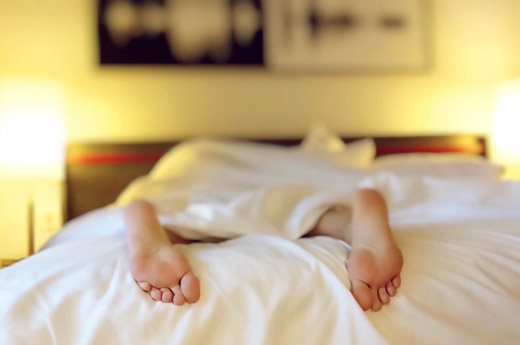
- Watery calluses on the feet appear as a result of wearing uncomfortable or rough shoes. The blisters, when pressed on by the walls of the shoes, burst and form painful wounds. Thin skin may peel off from the site of injury, exposing the inflamed dermal layer;
- insect bites often cause the formation of vesicles on the body and skin of the feet;
- burns of any origin (solar, thermal, chemical, electrical) cause the formation of blisters on the epidermis;
- cryodestruction is a method of removing warts, including plantar warts. After the procedure, the formation of blisters is often observed, which later burst and become crusty;
- the effect of chemicals on the body can manifest itself as a rash in the form of blisters.
Domestic burns as a cause of blisters
If blisters appear on the hand, itch like bites, swell and burst over time, and the person is guaranteed not to suffer from fungal diseases or mycotic pathologies - most likely these are household burns. Often housewives who are forced to spend a lot of time at the stove and perform their duties “automatically” simply do not notice how they get burned. As a result, blisters form on the body. They itch like bites, swell slightly (typical of a second-degree burn), and go away after a few days.
To prevent burns, you should be more careful about your actions in everyday life: do not touch hobs, hot kitchen utensils, or radiators.

For what reasons do itchy blisters appear on the body?
With allergic urticaria, the immune system becomes involved in the fight, which leads to an allergic reaction. Non-allergic urticaria is accompanied by exacerbation of chronic diseases. The cause of urticaria may be infection with Giardia, which parasitizes the bile ducts. These microorganisms can cause not only hives, but also nausea, pain in the stomach and liver. There can actually be a lot of reasons, and everyone is different.
It should be remembered that modern doctors are trained to treat disease, but they must learn to examine healthy people in order to prevent disease.
The blisters themselves are formations that appear as a result of the separation of one of the layers of the skin. The created cavity fills with liquid, and the skin around it begins to turn red from tension. In some cases, single formations are noted, but sometimes blisters immediately cover an impressive part of the body. This happens, for example, with burns. Sometimes the blisters start to itch.
Infectious diseases that can cause blisters
In some cases, dermatological pathologies may indicate the presence of serious diseases:
- Anyone can develop measles, regardless of age or gender. Appears under the influence of the measles virus. Symptoms: Pink or white blisters appear on the body and itch like insect bites. Over time, the temperature rises, the person is forced to take sick leave and undergo a intensive course of treatment.
- Rubella is characterized by the following dermatological manifestations (can be more or less pronounced): small red spots appear all over the body and itch and itch. This is a kind of harbinger of the development of the disease and appears in the early stages. Over time, the temperature rises, severe weakness appears, lymph nodes enlarge, and the patient is forced to take sick leave.
Species characteristics
The rash may differ in several ways, which will help a specialist make a diagnosis. The elements of the rash are distinguished by:
- type of lesion (spots, papules, blisters, plaques, urticaria, etc.)
- lesion configurations (location and grouping of individual elements)
- texture
- localization
- prevalence
- blossom
Based on appearance, there are 3 main forms of rash on the legs: red, small, and allergic.
Red rashes
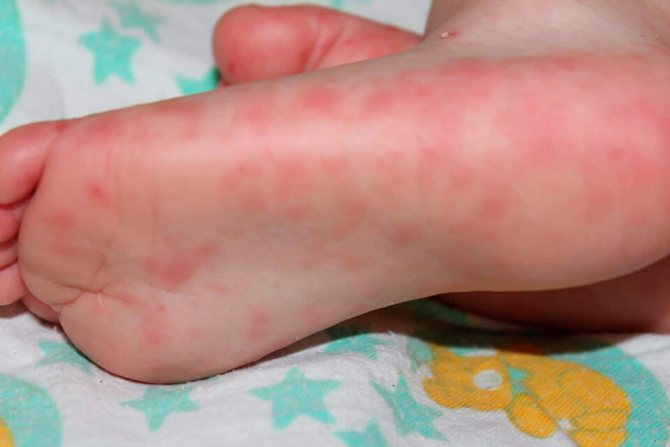
A red rash on the legs can take different forms: papules, spots, roughness, blisters filled with clear liquid or pus, erosions, etc. This problem can be a symptom of pathological processes both outside and inside the body.
Common causes of a red rash on a person’s lower extremities:
- allergy
- scabies
- incorrectly chosen shoes
- depilation
- a bite of an insect
- immune disorders
- viral or infectious diseases
- fungi
Depending on the cause and origin, red spots can be localized in any part of the leg, most often in the area of the foot, knees, and lower legs.
Small formations
A small rash in the knee area may indicate the development of a hemorrhagic rash. Depending on the cause, the color of the affected areas may be red or darker - closer to purple and black. Such skin pathologies occur against the background of infectious or hereditary diseases, and disappear after a few days. The prolonged course of the disease indicates that it has acquired a chronic form.
Allergic rash
Each person's reaction to an allergen manifests itself differently, but one of the most common allergy symptoms is rashes of various shapes, textures, and lesion configurations. An allergic rash on the legs forms in the form of scaly areas of bright pink or red color. The rashes are very itchy, causing discomfort to the patient. This reaction occurs to a specific allergen: food, clothing, chemicals or detergents. An allergic rash can be confused with chickenpox or urticaria. Sometimes rashes occur against a background of redness and swelling of the skin. This condition can lead to serious consequences for the patient, including death.
Mycotic (fungal) diseases of the skin
You can get a fungus anywhere. But few people know that almost every person has fungal spores in one quantity or another on their body. They just begin to develop when the body’s defenses fall. And when the skin is not able to limit the proliferation of the fungus. Then the person complains of blisters on the heels: they itch like bites, bring pain and discomfort, and spread over a large area over time. The “favorite” places for fungus are the heels, the space between the fingers, and the nail plates of the hands and feet.
You should visit a dermatologist: modern anti-fungal medications will help get rid of the pathology in a matter of days. If the disease has reached an advanced stage, longer treatment will be required.
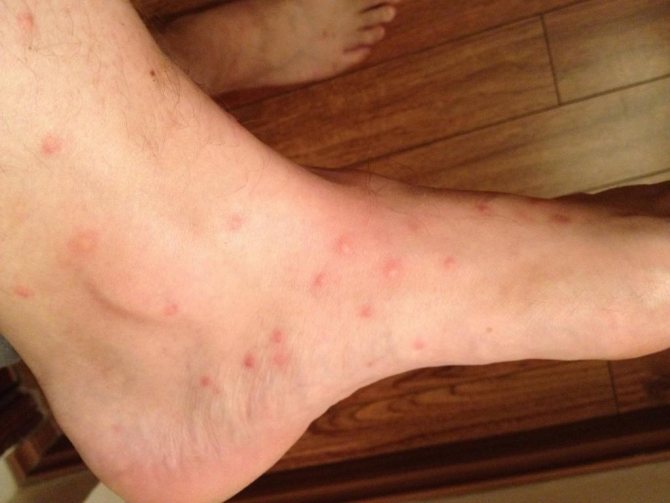
First aid
Having noticed red blisters on the body that itch, you need to try to take the patient to a medical facility, where they can find out the cause of this inflammatory process.
If for some reason it is impossible to immediately get medical help, you need to remember what should be done first to alleviate the person’s condition.
- If you suspect an allergic reaction, remove to another, well-ventilated area, eliminate the probable causes of irritation: chemicals, dishwashing detergents, floor cleaners, shampoos.
- If swelling and red blisters appear on the skin after contact with a cosmetic product or hair dye, rinse immediately with plenty of water .
- If there is severe burning or itching apply ice and make a cooling compress by soaking gauze folded in several layers in cold water.
- You can give any antihistamine (suprastin, diazolin).
- If spots spread quickly or swelling increases significantly, call emergency doctors , as the situation may threaten a person’s life.
- If it is not possible to avoid skin damage, treat the surface around the blisters with an antiseptic to reduce the likelihood of pathogenic microbes penetrating the skin.
- It is necessary to clearly remember the dosages and names of the drugs that are given to the patient.
- If you experience shortness of breath, difficulty breathing, dizziness, or loss of orientation, you need to provide the person with complete rest , call an ambulance and ask the doctors to constantly stay in touch to guide the actions of the person providing first aid.
When providing first aid, we must not forget that the very first action is to avoid contact with substances that may cause blisters . Then - call any medical institution with a request to come urgently and explain what to do within 10 - 15 minutes. Strict adherence to the recommendations of professionals will help to avoid complications and dangerous consequences of diseases.
READ ALSO: How many days does it take for herpes to go away - how long does the disease last?
Atopic dermatitis: symptoms and treatment methods
The causes of atopic dermatitis are still unknown for sure. It can appear in both infants and adults. As a rule, at first the skin simply turns red. Over time, itching, burning, and small blisters begin to appear. “Favorite” places for atopic dermatitis: cheeks, lower back, shoulder blades, calves, forearms.
There is only one non-drug way to get rid of the manifestations of atopic dermatitis: a strict diet. As a rule, through selection, those products are determined, against the background of which dermatitis becomes less and eventually disappears completely.
There are also medicinal methods of treatment: for example, Advantan cream is highly active due to the content of corticosteroids in its composition. Already on the second or third day of treatment, the patient feels significant relief. The disadvantage of this remedy is that, as a rule, after stopping the drug, all the symptoms return again. The main key to the success of treatment is to eradicate the cause that caused the blisters to appear. Itchy legs, like insect bites, but there are no other symptoms - it is likely that the cause of this condition is atopic dermatitis.
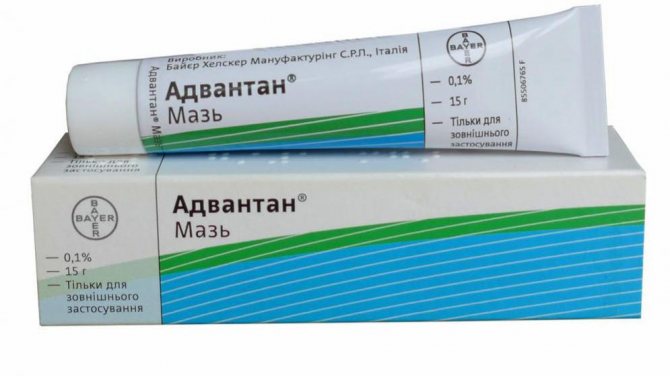
Why do blisters on my back itch and a red spot appear?
Many people mistake blisters that appear on the back for regular acne and ignore them.
Despite the fact that this part of the body rarely shows symptoms of diseases, in some cases it is in the back area that signs of infections, dermatological problems and similar troubles are found.
Therefore, the disease must be taken into account.
Surprisingly, something that you often encounter and do not see as a threat can provoke trouble. We present to your attention a list of the main everyday reasons . So, blisters on the back - what causes them to appear:
- Poor nutrition . Abuse of sweets, fatty and unhealthy foods threatens not only the appearance of acne, but also blisters.
- Hormonal disbalance . Usually the back is “decorated” with acne after it, but in some cases blisters also appear.
- Body care products . By using expired, inappropriate or low-quality shower gel or the like, you risk causing breakouts.
- Inadequate body care . In case of untimely or insufficient cleansing, pores become clogged and skin defects appear.
- Burns . They can be either chemical or thermal.
- A bite of an insect . Most often, a small spot initially appears, but after scratching or a reaction from the body, it turns into a red spot with blisters on the back.
- Allergy to clothes . Synthetic fabrics with caustic dyes have a negative effect on the skin and often cause rashes. Because of this, the blisters on the back become itchy and irritated.
If you have not encountered the above provocateurs, but blisters still appear on your back, pay attention to the list of provocateur diseases :
- Secondary syphilis . In this case, blisters on the back bother only two months, and then completely disappear;
- Scabies . With this disease, rashes are localized not only on the back, but also on other parts of the body. Blisters on the back are very itchy;
- Heat rash . Most often it occurs in children, but it often occurs in adults as well. The blisters are light pink in color and small in size.
Lying on a bed or sitting on a chair with a backrest can cause large blisters.
The first aid in this case will be to puncture large lesions and disinfect them .
The process of removing a blister on the back consists of several points:
- Wash your hands well with laundry or other antibacterial soap.
- Clean the affected skin surface with a disinfectant.
- Heat the needle over a fire or disinfect it.
- Carefully poke the blister with a needle.
- Disinfect the surface of the affected skin.
- Protect the damaged area with an antibacterial bandage.
If there are no large blisters that can burst, simply disinfect your back with a suitable non-aggressive antibacterial product.
Blisters on the back can be treated with folk remedies or pharmaceutical remedies. The treatment regimen with drugs from the second category involves three points:
- Neutralization . The first step is to use an intensive disinfectant. Iodine is best . It is advisable for them to lubricate the rashes for two days;
- Exposure to active components. , Levomekol ointment is perfect . It should be applied to the blister for two to three days;
- Eliminating blister marks . To ensure that the skin on your back looks attractive after treatment, you should use healing ointments. Dermatix or Contractubex will do
Pour a couple of large spoons of chamomile and the same amount of coltsfoot with a small amount of boiling water. Strain the infusion and soak the gauze in it. Apply it to the affected area and secure with a bandage. The compress should be used within 24 hours.
The next stage is accelerating healing . Sea buckthorn oil, a mixture of mint oil and aloe juice, and liquid vitamin E are suitable for this. It is recommended to use these homemade ointments until the blister heals.
The final stage of treatment with folk remedies is the use of products that eliminate marks from blisters . Sesame oil, tea tree oil and yellow clay are suitable for this.
Perhaps the biggest mistake in this situation would be squeezing out all existing blisters . Do not repeat the steps shown in the following video. This is dangerous for your health:
Self-medication when in doubt about a diagnosis made independently rarely leads to good consequences . If you find it difficult to identify the cause at home, go to the doctor.
It is worth remembering that blisters are not pimples, spots or hematomas. To get rid of them, special measures should be taken. Many drugs and actions that are appropriate in the process of eliminating the above skin defects are in no case suitable if blisters are the problem. Consider only recommended treatments.
There are two main reasons for contacting a specialist.
The first is suspicion of a disease due to which the rash appeared.
The second is the impossibility of getting rid of blisters at home , even if they appeared due to allergies, etc.
First, you should visit a dermatologist so that he can accurately diagnose the cause of the blisters. Next, he may refer you to other doctors if he detects a disease that is not related to the skin.
If you are concerned about the possibility of a recurrence of the disease, you should make sure that you have completely eliminated the problem and its provocateur.
In the case when you are simply scared even by the thought of blisters on your back, but you have never encountered them, it is enough to know a few rules of prevention:
- Cleanse your body well . Use soap with an antibacterial effect, an intensely cleansing scrub and comfortable washcloths that will allow you to reach hard-to-reach areas of your back yourself.
- Adjust your diet . Fatty, sweet and unhealthy foods should be consumed as little as possible.
- Watch your health . In case of any deviations or unexpected deterioration in health, you should seek help from a specialist.
- Use insect bite repellents when they are active. This rule should be taken especially carefully if you often travel out of town for picnics, fishing or the river.
- Wear clothes made from quality fabrics . Avoid synthetics and items that contain harsh dyes.
Of course, rashes often go away on their own, but they leave marks that are unpleasant aesthetic defects.
Take measures to get rid of this disease so that the skin on your back is beautiful and clean.
Diet and skin condition
Changing your diet almost always brings relief of symptoms, whatever the diagnosis - allergies or dermatitis (except for infectious diseases). You should exclude the following categories of foods from your diet:
- fast food;
- hot and spicy spices;
- salt and sugar - reduce to a minimum;
- carbonated, sweet and alcoholic drinks;
- confectionery;
- vegetables and fruits of bright colors.
Reviews from patients indicate that after switching to proper nutrition, the number of rashes is reduced, and overall well-being improves and performance increases.
Bad habits as a factor in the appearance of blisters
If a patient has been suffering from dermatological pathologies for a long time, and neither pharmacological drugs nor diet help him get rid of them, then he should think about his lifestyle. How often does the patient drink alcoholic beverages and does he smoke? These bad habits slowly but inevitably “undermine” the body’s defenses; over time, large blisters appear on the body, itching like bites - this is a symptom of dermatological pathologies. Over time, the body can become so exhausted that it is simply unable to resist even the spread of fungal spores.
If no treatment helps with the appearance of dermatitis and blisters, or only helps for a short period of time, then you should think about the need to completely stop smoking and drinking alcohol, even in small quantities. Judging by the experience and reviews of people who were able to get rid of dermatitis, this method really helps. At the same time, you should minimize or completely avoid the consumption of salt and sugar.
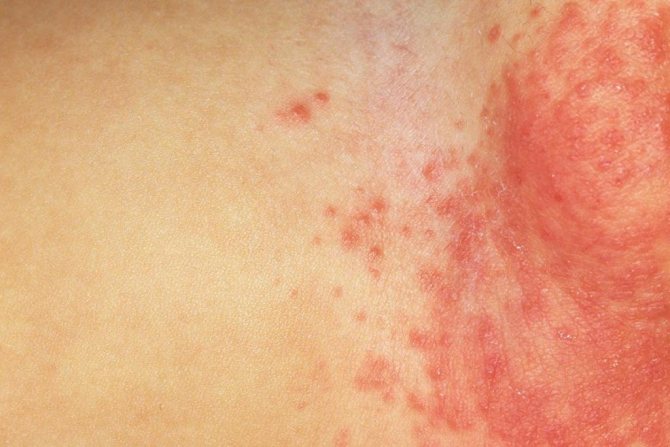
What causes blisters to appear on the back?
Most people believe that blisters on the back do not pose any threat to life. Therefore, they simply try not to pay attention to them.
But this is a misconception; experts note that it is on the back that signs of infection, dermatological diseases and other troubles can be found.
Therefore, we suggest finding out in more detail what diseases are masked by this symptom.
Blisters - what are they?
A blister is a formation filled with clear liquid, pus or blood. Manifests itself with pain syndrome. Size ranges from small to large (about the size of an adult's palm). In appearance, the blisters appear to rise above the skin. They have clearly defined boundaries, under which swelling of the skin appears. Causes an itchy sensation.
Reasons for appearance
When blisters are first detected, it is worth immediately finding out the cause and determining what disease the patient has. You should not forget about this, since the algorithm of actions directly depends on the type of disease.
- Unhealthy eating. Excessive consumption of sweets, confectionery, fatty and spicy foods, fast food, instant food.
- Hormonal imbalance.
- Poor quality body care cosmetics. Expired or unsuitable shower gel, cream, or lotion can cause this type of rash.
- Untimely body care. The pores of the skin become clogged, which is why defects appear on the epidermis.
- Chemical, thermal burn.
- Insect bites. Initially, a small red spot forms, which, after scratching or a peculiar reaction of the body, leads to the appearance of a large blister.
- Allergic reaction to clothing or other irritants. Fabrics made from artificial materials disrupt the process of natural ventilation, which is why blisters appear on the back, which do not hurt, but itch.
If the patient has not encountered any of the above reasons and blisters have formed on the back, then it is worth thinking about the development of the pathological process. Disease provocateurs include:
- scabies. Rashes appear on the back, arms, and legs. In a word, all over the body and itchy a lot;
- measles is caused by a virus. The disease manifests itself in the form of a blistering rash on the back and other parts of the body, high temperature, fever, cough;
- secondary syphilis. Blisters on the back are visible for exactly 60 days, after which they completely disappear from the body. If detected, it is first recommended to immediately consult a dermatovenerologist for advice;
- acne – formed due to improper functioning of the endocrine glands. The pores become clogged, which creates a favorable environment for the development of pathogenic microflora. Blisters can vary in size, with or without fluid;
- prickly heat. Mostly occurs in young children, rarely in adults. Light pink in color and small in size;
- Chickenpox or varicella is a disease that affects children and, in rare cases, adults. In addition to blisters that appear on the skin, body temperature increases and itching appears;
- urticaria - rashes are located on the back, arms, legs. They are small in size, round in shape, and are accompanied by itching.
Blisters that appear on the back should not be scratched too much. This part of the body is in contact with various surfaces. Therefore, the rashes become vulnerable. When scratched, the watery blisters on the back burst and the infection spreads even further.
Treatment
If the blisters on the back do not itch, they are small in size and have a small amount of fluid inside, then it is recommended to provide the patient with first aid. For blisters resulting from a burn or an allergic reaction, these actions will be therapeutic. So, what needs to be done with small blisters located on the back:
- Treat the surface with a disinfectant.
- Apply a gauze bandage.
Provided that the blister is already large enough and filled with liquid, the following measures must be taken:
- treat your hands, the surface of the blister and the skin around it with an antiseptic. Similar actions should be done with tools;
- Insert a needle into part of the bubble, as close as possible to the skin;
- press the bubble with smooth movements to drain the accumulated liquid;
- treat with a disinfectant composition;
- Apply chloramphenicol to a gauze pad and secure it to the damaged area with a band-aid.
The bandage should be replaced with a new one 1-2 times a day, after drying the wound a little. It must not be kept wet all the time. It is allowed to pierce blisters, provided that the cause of their appearance is an external factor. If signs of disease are detected, performing an autopsy procedure is strictly prohibited.
Medications
If blisters on the back appear as a result of measles, acne, chickenpox and other infectious, fungal diseases, then the treatment and selection of medications should be carried out strictly by a doctor. He prescribes examinations, tests and conducts an initial examination. Thus, treatment is prescribed after receiving all the results and identifying the cause of the rash.
The main medications that can be prescribed are antiviral agents and treat the surface of blisters with an antiseptic. In case of hormonal imbalance, tests are also required, after which the doctor prescribes hormonal medications. Here you need to approach it with all responsibility and take medications strictly according to the plan.
In this case, you can quickly and without consequences restore your hormonal balance.
Treatment of rashes against the background of an allergic reaction is carried out using antihistamines: Zyrtec, Suprastin, etc. To eliminate the consequences of burns, local preparations are used - ointments, gels. Panthenol is considered the best on the pharmacological market.
If blisters on your back appear suddenly, then you should think about the reason for their appearance. In any case, it is necessary to diagnose the disease and treat the pathological condition under the supervision of a specialist in order to avoid serious consequences.
Loading…
Source: https://spinanebolit.com/voldyri-na-spine.html
List of ointments that will help get rid of blisters on the body
Below is a list of products for external use that have a healing effect and relieve itching and burning:
- "Solcoseryl" is available in the form of ointment and cream. It has a powerful soothing and skin-regenerating effect.
- "Bepanten" is a soothing cream that has virtually no contraindications and does not cause addiction, unlike ointments containing corticosteroids.
- "Advantan" is a hormonal ointment. Helps very quickly. Alas, after discontinuation of the drug, as a rule, the clinical picture of the disease returns again.
- “Sulfur ointment” helps with some types of dermatitis; it can provoke allergies in people with sensitive skin.
- “Lamisil-gel” is effective against fungal infections of the skin, it brings relief: it quickly relieves itching and burning, and promotes the restoration of epidermal cells.
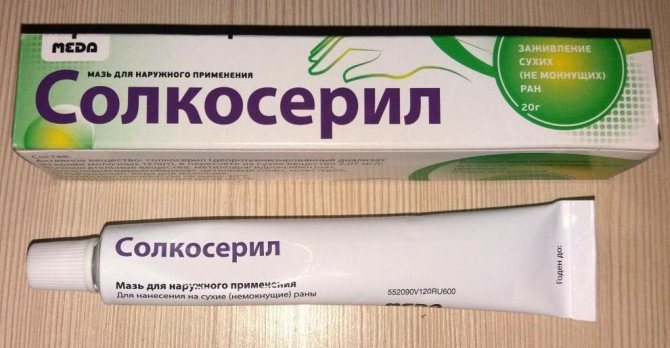
Hygiene rules and prevention
Following the following hygiene rules will help reduce the risk of a watery rash on your legs:
- wash your feet daily with soap;
- promptly eliminate keratinization on the heels and feet;
- regularly dry, clean or wash shoes;
- change socks every day.
The following precautions can be taken as preventive measures:
- use individual shoes in baths, saunas, public showers;
- do not use other people’s pumice stones, brushes, or foot files;
- do not wear or try on other people's shoes;
- do not use low-quality cosmetics for feet;
- do not wear socks and shoes made of artificial materials.
Sometimes preventing a disease is easier than curing it. A timely visit to a doctor will help to find out the etiology of the rash and avoid possible complications.
source
Traditional methods of treatment if blisters pop up and itch like bites
Some traditional methods of getting rid of blisters that cause itchy skin are also popular. Judging by the reviews, these are:
- infusion of oak bark (a tablespoon per glass of boiling water): wipe the affected area with a cotton pad soaked in the decoction several times a day (has an astringent and anti-inflammatory effect);
- calendula infusion (a tablespoon per 200 ml of boiling water) has a calming and anti-inflammatory effect; blisters should be wiped several times a day;
- baths with salt and soda - this method is suitable if the blisters are located in the extremities.
Prevention of dermatological pathologies: advice from doctors
Dermatologists recommend following these simple rules in order to avoid the appearance of dermatological pathologies:
- Wash your hands thoroughly before eating and coming from outside.
- Observe personal hygiene rules.
- Wash food before eating.
- If there are pets in the house, monitor the condition of their fur and skin and treat if necessary.
- To refuse from bad habits.
- Reduce your consumption of fast food, sweets, sugar and salt to a minimum.
Causes and possible diseases
Important! Under no circumstances should you pick, pick, or cut off blisters, as this can cause infection. The addition of a secondary infection threatens inflammation and suppuration.
First you need to pay attention that the appearance of any blister on the human body can be caused by:
- mechanical damage;
- allergic reaction;
- disease;
- insect bite;
- burn;
People with sensitive skin may develop itchy blisters even after minor mechanical irritation. There are also a number of diseases that provoke their appearance:
- Hives. Clinically, urticaria manifests itself in the form of multiple rashes on the skin and mucous membranes. There are many varieties of this disease, but each is always based on the appearance of itchy blisters that rise above the skin. The rashes are localized throughout the body - in the place where there was communication with the allergen. Usually the rash with acute urticaria goes away within 1-3 hours, less often it can last a couple of days. For example, cold urticaria most often manifests itself in the form of small blisters and swelling on the hands, but the acute form can appear on the mucous membranes of the mouth, tongue, lips, cheeks, etc.
- Shingles. The initial stage is characterized by the appearance of malaise, nausea, dizziness and weakness. The next day, grouped blisters filled with cloudy fluid appear in the area of the trigeminal nerve and intercostal nerves. As the process progresses, they become crusty and transform into erosions. The cause of the appearance may be hypothermia or a sharp decrease in immunity, provoking the reactivation of the latent state of the varicella zoster virus acquired in childhood. Men aged 45-60 years are most often affected in spring and summer.
- Neurodermatitis. This disease is based on disorders in the nervous system, metabolism and internal organs. The social factor plays a significant role in the development of neurodermatitis. The main symptom is terrible, non-stop itching and blisters that appear as a result of scratching. The rash can be localized on all parts of the body, most often on the hands, less often on the genitals. Some people may have forms that are closely related to disorders of the nervous system. In such cases, painful itching and insomnia may occur.
- Fungal diseases. In this particular case we are talking about mycoses of the feet, which most often occur in men and women. For example, athlete's foot has several forms, but with intertiginous and dyshidrotic, blisters appear on the feet - between the toes and arches of the feet. The rash is accompanied by peeling, weeping, cracks and crusts. In these areas, the skin is usually very itchy and has a foul odor.
- Scabies. The main symptoms of this disease are severe itching and the presence of scabies. Not always, but the appearance of blisters and small vesicles at the sites of pathogen penetration is noted. Most often, the rashes are localized on the flexor surfaces of the upper and lower extremities, torso, hands, and less often in the lumbar region and genitals. In children, rashes can spread throughout the body; in adults, they almost never occur on the face, neck or scalp.
- Eczema. There are many types of eczema, but each of them is necessarily accompanied by the appearance of blisters on the skin that itch unbearably. Along with them, swelling, redness, wounds and cracks may appear. Depending on the type of eczema, the location of the rash can be determined. For example, seborrheic eczema usually appears behind the ears, on the back of the head and chest area, and professional eczema appears on open areas of the body - hands, face, neck, etc.
If the body itches and blisters appear, then in 80% of cases this is the first symptom of an allergic reaction. You don’t have to be allergic, since even the bites of many insects can cause rashes accompanied by unbearable itching.
Watery blisters on the skin itch - find out more
Human skin is an indicator of the internal health of the body. If rashes of various kinds and types appear, you should check for additional symptoms. If watery blisters on the skin itch , this could be a simple allergic reaction to an external irritant or a serious illness that requires urgent treatment.
What do vesicles look like?
In practice, doctors often encounter watery rashes that look like this:
- Small bubbles or vesicles.
- Large blisters or bullae.
- Bubbles with pus inside or pustules.
Typically, a vesicular rash or dermatitis is the main sign of a dermatological disease affecting the body. The clinical picture of the disease is clear. Bubbles collect in dense areas. Chickenpox in childhood is manifested by frequent accumulation of blisters with fluid inside.
The emergence process proceeds in the following order:
- The skin located at the site of the lesion becomes red. The patient feels discomfort in this place.
- Dots begin to form on the surface. As it increases, the inflammatory process intensifies.
- Itching appears and gradually becomes unbearable. Depending on what illness caused the blisters, additional symptoms and possibly pain may appear.
- As a result, the rash takes on the appearance of an open wound that grows on the surface and has a destructive effect deep in the skin.
If the appearance of blisters is not associated with an infectious infection, then the vesicles remain red pimples, located tightly to each other, causing itching.
Where are they located
The location of the rash depends on the disease that caused the unpleasant symptoms. This can be individual areas of the body or the entire surface of the skin. Only the arms or legs may be affected, unilateral placement.
Depending on the area occupied, the danger of the disease developing inside the body is determined.
Reasons for appearance
The factors that provoke the occurrence of the disease are different. This may be a minor skin injury or a serious illness that requires medical attention.
Mechanical reasons
Everyone has experienced a blister after walking in new shoes. This is one of the manifestations of a vesicle. A red spot appears on the leg at the point of contact, then the skin exfoliates and fills with a clear liquid.
The main places where blisters are most likely to appear are where the body comes into contact with uncomfortable and tight shoes or clothing. Work in the garden, processing vegetables, sports equipment - everything becomes a source of violation of the internal integrity of the epidermal layer. Calluses most often appear in people with a thin layer of skin and increased sweat production.
Viruses
Viral infections contribute to of blisters on the surface of the body
- A disease that occurs in both adults and children is chicken pox. The virus is transmitted through the air, through coughing, talking, and sneezing. First, the skin turns red, then tiny blisters form, turning into small ulcers. Initially, there is a clear liquid inside the formations, then pus is added. The patient's temperature rises and chills appear. Scratching the blisters is strictly prohibited to avoid infection. Vesicles are evenly distributed throughout the body.
- Herpes. The second name for the disease is the common cold. Main places of damage: lips, face, genitals. At the site of the future bubble, it bakes and redness is observed. A slight rise in temperature is possible.
- Shingles. This disease often occurs in people with weakened immune systems, as well as those who have had chickenpox. The inflammatory process develops in the roots of the brain located at the back. External signs of the disease resemble a burn. Patients complain of back and chest pain. As a rule, where pain was felt, spots begin to appear, turning into blisters. The liquid accumulating inside is transparent. Itching and burning appear. The lesion runs along one side in the region of the ribs. Over 7 days, the number of vesicles increases. The disease goes away on its own within a month. If the disease is severe, then the tissues at the sites of the blisters die and the color changes to black.
Parasites
Parasites can have a negative impact not only on the internal organ. There are many parasitic life forms that disrupt external health.
- Drankulosis. The disease can occur after ingesting water from a contaminated source. The larva penetrates the body and settles in the legs. Characteristic signs are the formation of a roller. As a result, numerous blisters form on the leg, reaching a diameter of up to 8 centimeters. When water gets on them, the bubbles burst .
- Scabies. A parasite that infects the upper layer of the epidermis is called the scabies mite. An animal of microscopic size. The skin turns red, and if the spots are scratched, appear . With the help of iodine, you can trace the path of the parasite by applying the solution to the surface. When the disease occurs, the affected areas constantly itch. The main place susceptible to tick attack is the hands, in the area of the joints.
Allergy
Many external factors provoke an allergic reaction of the body, expressed in the appearance of blisters.
- Hives. A disease that causes watery blisters on the skin of a child . Inside the formations are filled with clear liquid. The blisters are itchy , but scratch them . If the surface of the blisters is not disturbed by scratching, the rash goes away within 3 or 4 days. The disease completely leaves the body on the 7th day. Otherwise, a regeneration crust does not appear at the site of the blister, and the recovery process is lengthy. As a rule, the affected area is on the hands, on the face in the cheek area, and touches other parts of the baby’s body.
- Contact allergy. Damage occurs upon contact with chemicals, waste chemicals, synthetics, or an allergic reaction to medications. Signs appear five minutes after contact.
Fungus
Clear blisters form between the toes as a result of the dyshidrotic form of the fungus. In the first stage, the blisters are not visible because the thicker skin in between hides the formations.
If you look closely, you can see cavities with liquid that itch . Often the initial stage goes unnoticed due to the fact that when cleaning the feet, the blisters begin to burst .
However, the reason for their appearance remains, after which new blisters form, are larger and contain infectious fluid.
Dysfunction of the nervous and endocrine system
The patient's exposure to stressful situations provokes a disruption in the functioning of the nervous system, and the endocrine system gradually ceases to function normally. As a result of a malfunction, eczema occurs on the skin. The patient feels a burning sensation, itching.
Urticaria often occurs against the background of constant nervous experiences. The factors that provoke the appearance of the disease are a feeling of fear and excitement.
Autoimmune causes
Diseases that arise as a result of dysfunction of internal systems also cause the formation of watery blisters.
- Dermatitis herpetiformis. Appears when the small intestine stops functioning. An immunological reaction appears, provoking symptoms similar to herpes.
- Pemphigus. The disease occurs rarely and can be fatal. The patient develops the appearance of bubbles, of different sizes, in large quantities. The danger lies in damage not only to the skin, but also to the mucous surface in the oral cavity.
- Bullous pemphigoid. Signs resemble hives, blisters appear on the skin along with swelling and redness.
Treatment options
The implementation of therapeutic measures depends on the cause of under the skin . to treat not only the rash, but also the original source.
Small resulting from mechanical damage to the skin are not a dangerous disease. Their treatment is possible both with medications and traditional medicine recipes.
Burns are eliminated with Solcoseryl ointment. It is not recommended to use sour cream, sunflower oil, kefir and other products when burn blisters appear. Areas of skin free from blisters are disinfected with iodine or hydrogen peroxide.
To get rid of prickly heat, it is necessary to carry out therapeutic measures aimed at drying the area. Bath with a decoction of string, chamomile, oak.
Powder is also used: a mixture of starch and talc. To effectively get rid of rashes for children, ointments based on zinc oxide are used. Salicylic acid or Dermovate is prescribed.
In the adult population, prickly heat is treated with camphor, menthol, and betamethasone.
Small small blisters of herpes are treated with special ointments: Zovirax, Acyclovir. The course lasts 5 days. To enhance the effect, tablets are taken orally: Famvir, Minaker, Valavir. If the disease occurs in a newborn, then you need to use suppositories aimed at fighting the virus: Interferon.
To get rid of chickenpox, the use of medications is not required. The disease goes away on its own, the main thing is to prevent the appearance of pus on the rash. To do this, you need to constantly treat the affected areas with a solution of manganese or brilliant green.
Ringworm appears if a person has a weakened immune system, against the background of nervous experiences and as a residual phenomenon of herpes. Treatment of the disease involves the use of ointments against herpes. In case of severe itching, you can take medications from the analgesic class: Ketorolac, Ibuprofen.
To remove blisters caused by the negative effects of parasites, antibiotics are required: Erythromycin, Gentamicin. You also need to support the immune system by taking Amiksin. Thus, felinosis is expelled from the body.
Benzyl benzoate emulsion is used against scabies mites, in different percentages for adults and children. The ointment is rubbed into the affected areas for 3 days. There are also good reviews about sulfur ointment, which should be applied to the entire body, except the head. Continue this way for 3 days. In this case, the underwear does not change to enhance the effect. Folk recipes contain gasoline and kerosene.
To relieve an allergic reaction, you need to take antihistamines. The effect is aimed at eliminating external signs: itching, redness, preventing the emergence of new formations. The following are suitable for this: Suprastin, Claritin, Diphenhydramine. For young patients, Cetrin and Fenistil are used.
As a rule, fungal infection penetrates deep into the body and disrupts the functioning of internal systems. The appearance of external signs is an advanced stage of the disease. Therefore, the fight against fungal infections involves taking antifungal medications orally. Fluconazole is recommended as a pharmaceutical drug. One capsule is enough for treatment. After a month, it is advisable to repeat the course.
To save yourself from itching and burning, ointments aimed at destroying the fungus will help: Exoderil, Candide, Nizoral, Pimafucin. For treatment to be effective, diet must be followed: no sweet, spicy, salty or fatty foods.
For autoimmune diseases, therapy consists only of removing external manifestations: treating the affected area with antimicrobial drugs to avoid the penetration of a secondary infection. For bullous pemphigoid, corticosteroids are taken orally: Prednisolone. On top use an ointment containing corticosteroids: Fukortsin.
Source
Source: https://ltmed.ru/zabolevaniya-kozhi/vodyanistye-puzyrki-na-kozhe-cheshutsya
Blisters on the body photo
Treatment
Before carrying out any treatment, it is recommended to see a doctor, since in the presence of large blisters there is a possibility of developing Quincke's edema, which can lead to suffocation.
If an allergic reaction is caused by taking medications or food products, it is recommended to exclude them (take drugs with analogues). If the blisters are the result of insect bites, then you don’t have to wait for improvement and immediately start using antihistamines. Most often, doctors recommend the following drugs:
The dosage and duration of taking these medications should be prescribed by your doctor (usually the duration of use does not exceed 2 weeks).
Also, in the presence of large blisters, steroid ointments are indicated:
Regarding steroid ointments, you need to pay special attention to the fact that they are harmful only when they are taken “thoughtlessly” not as prescribed by a doctor. Only an experienced doctor can select an effective hormonal drug and calculate the dosage that will achieve a clinical effect without side effects.
Treatment options
The implementation of therapeutic measures depends on the cause of under the skin . to treat not only the rash, but also the original source.
Small resulting from mechanical damage to the skin are not a dangerous disease. Their treatment is possible both with medications and traditional medicine recipes.
Burns are eliminated with Solcoseryl ointment. It is not recommended to use sour cream, sunflower oil, kefir and other products when burn blisters appear. Areas of skin free from blisters are disinfected with iodine or hydrogen peroxide.
To get rid of prickly heat, it is necessary to carry out therapeutic measures aimed at drying the area. Bath with a decoction of string, chamomile, oak. Powder is also used: a mixture of starch and talc. To effectively get rid of rashes for children, ointments based on zinc oxide are used. Salicylic acid or Dermovate is prescribed. In the adult population, prickly heat is treated with camphor, menthol, and betamethasone.
Small small blisters of herpes are treated with special ointments: Zovirax, Acyclovir. The course lasts 5 days. To enhance the effect, tablets are taken orally: Famvir, Minaker, Valavir. If the disease occurs in a newborn, then you need to use suppositories aimed at fighting the virus: Interferon.
To get rid of chickenpox, the use of medications is not required. The disease goes away on its own, the main thing is to prevent the appearance of pus on the rash. To do this, you need to constantly treat the affected areas with a solution of manganese or brilliant green.
Ringworm appears if a person has a weakened immune system, against the background of nervous experiences and as a residual phenomenon of herpes. Treatment of the disease involves the use of ointments against herpes. In case of severe itching, you can take medications from the analgesic class: Ketorolac, Ibuprofen.
To remove blisters caused by the negative effects of parasites, antibiotics are required: Erythromycin, Gentamicin. You also need to support the immune system by taking Amiksin. Thus, felinosis is expelled from the body.
Benzyl benzoate emulsion is used against scabies mites, in different percentages for adults and children. The ointment is rubbed into the affected areas for 3 days. There are also good reviews about sulfur ointment, which should be applied to the entire body, except the head. Continue this way for 3 days. In this case, the underwear does not change to enhance the effect. Folk recipes contain gasoline and kerosene.


